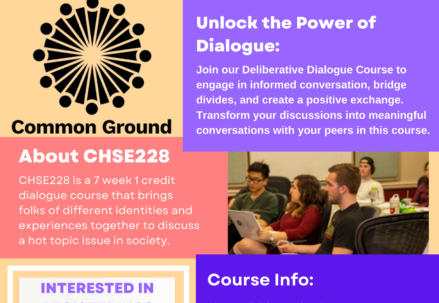What value does creativity bring to your life? Honors Humanities seminars encourage students to reconsider what art is and what role it can play in their lives.
This fall, students in the two-year living-learning program examined the role that creativity plays in major global issues. Coursework was multi-disciplinary, including literature and poetry, music and dance, film, painting and sculpture, and multimedia art and gaming. The seminars fulfilled the Understanding Plural Societies general education requirement, which encourages the study of diverse ways of thinking, and connected the arts and humanities with justice issues around the world.
Faculty teaching each of this semester’s seminars encouraged such exploration by curating student experiences to connect real-world applications with classroom discussions. Drawing on their networks, faculty invited speakers to share their creative work across multiple fields and cultures. This year, guests visited in person and virtually, from as far away as Lebanon, thanks to HyFlex classroom technologies.
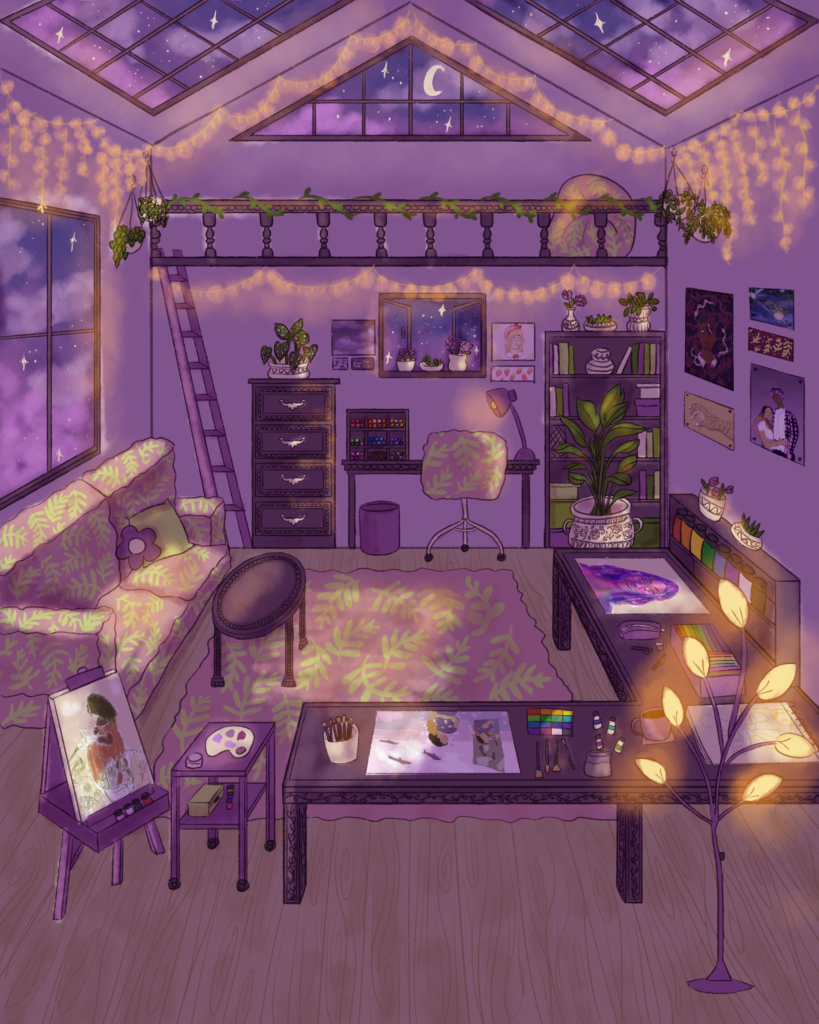
The seminar “Creative Lives in a Working World,” taught by Dr. Ingrid Satelmajer, examined the central question, “What does a creative life look like in the context of other responsibilities?” Students learned about scientists, lawyers and doctors who have also led creative lives as musicians, painters or writers. For example, they studied the life of William Carlos Wiliams, a physician who also wrote (and became famous for his) poetry, and reflected on how they might balance their own creative lives with non-artistic career endeavors.
“I have always been a creative person, and I chose this seminar because I wanted to find ways to integrate my creativity into a more traditional career trajectory,” said sophomore Sydney Jones, who is majoring in elementary/middle special education.
Students were inspired by guest speaker Ken Amarit, who talked to Satelmajer’s class about his work in the arts and technology. Based in New York City, Amarit creates stop-motion animated video games with needle-felted wool objects and also composes “chiptunes,” or music tracks with sounds sourced from Game Boys and computer parts. Having worked in various artistic disciplines, he shared his creative journey and explained that not all artistic endeavors have to end up as perfect, polished products.
“It’s important to enjoy the process,” said Amarit. “My advice is to consider how your work is cumulative and let your interests lead you to your next project, whether or not it is related to your primary career.”
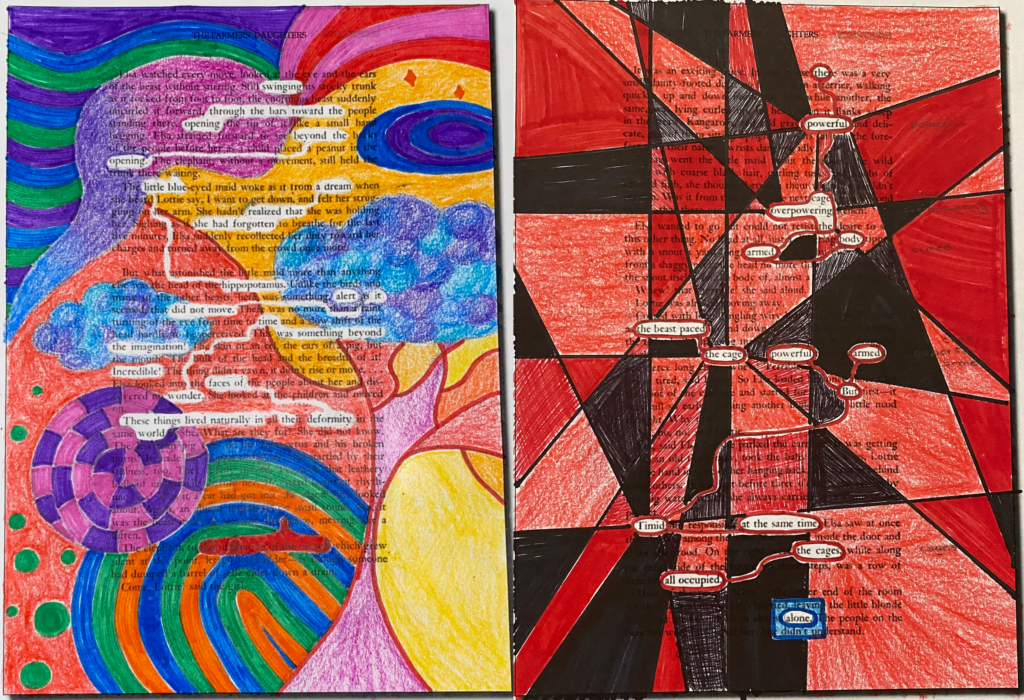
Students took this advice in developing their own creative projects in the course. Jones noted how Amarit imposed certain constraints on his work, like only using computer-related sounds for his “chiptunes” compositions. She applied this idea to writing “blackout poetry,” inspired by British artist Tom Phillips—she randomly selected pages of text and created rules to black out or redact words from the page and create a new poem.
“I always thought that more resources and fewer rules would only increase creativity,” she said. “Instead, I forced constraints on my process and found myself really inspired.”
Students in Dr. Aneta Georgievska-Shine’s seminar on “Art and Medicine in Renaissance and Baroque” reflected on how human understanding of creativity has developed throughout history. Changing understandings of the body and soul during the Renaissance and Baroque eras reflect how human diversity has been constructed over centuries. They looked at art in relation to medical theories and practices, as well as hierarchies related to health and illness in Europe during these periods.
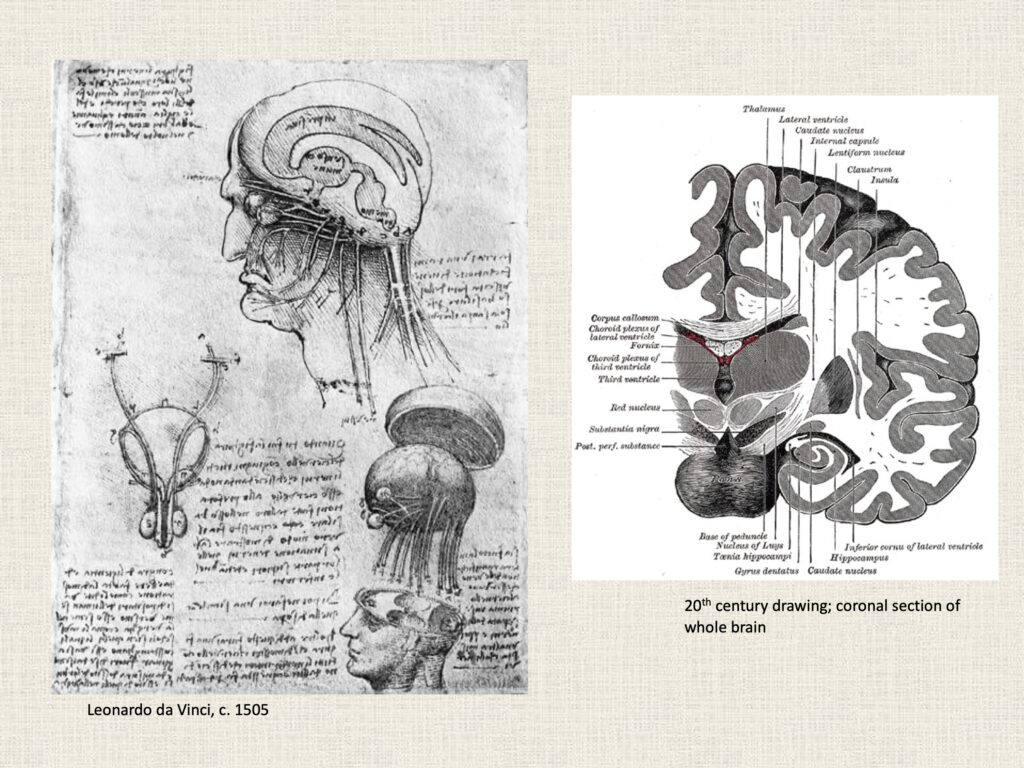
Dr. Mary Ellen Michel, a retired neuroscientist from the National Institutes of Health (NIH), gave a guest presentation about Renaissance painters who were influenced by scientific understandings of the brain at the time. Together, the class analyzed paintings and anatomical drawings by artists like Leonardo Da Vinci to connect sketches of brain structures to creative techniques for conveying emotion.
“We have to consider what artists knew about the human body back then and what we know today,” said Michel. “How would people during the Renaissance interpret the work? And how are past understandings still relevant to us now?”
Discussions extended beyond just the Renaissance and Baroque eras as students considered contemporary approaches to their own creative interests, whether in painting, sculpture or music.
Central to the question of the body’s role in creative pursuits, students in Dr. Kate Spanos’ “Dancing in the World” seminar focused specifically on what people express through dance. They examined how dancing is a chance to celebrate, pray, tell stories, resist oppression or feel a sense of belonging to a particular social, racial or cultural identity.
“At its core, the class is about analyzing movements and gestures as forms of embodied cultural knowledge, while examining one’s assumptions about a group of people and how they move,” said Spanos.
An important part of this work was interacting with dancers who have spent their lives training in and studying various forms, which included Chinese folk and classical dance, classical Indian dance, hip hop, Irish step dance, Brazilian capoeira, Afrobeats and vogue (a dance form that arises from ballroom culture, created by Black and Latinx LGBTQ+ communities in the United States). Guests spoke about their lives as dancers and guided students through “dance experiences” so they could feel these different forms of expression in their own bodies.
Guest Sunmoluwa Hamilton-Samuel, a professional dancer and teacher based in Maryland with expertise in traditional and contemporary West African dance forms, told students about her connections to Fela Kuti, the Nigerian musician and activist who pioneered the Afrobeat genre. Her stories connected embodied experience with history.
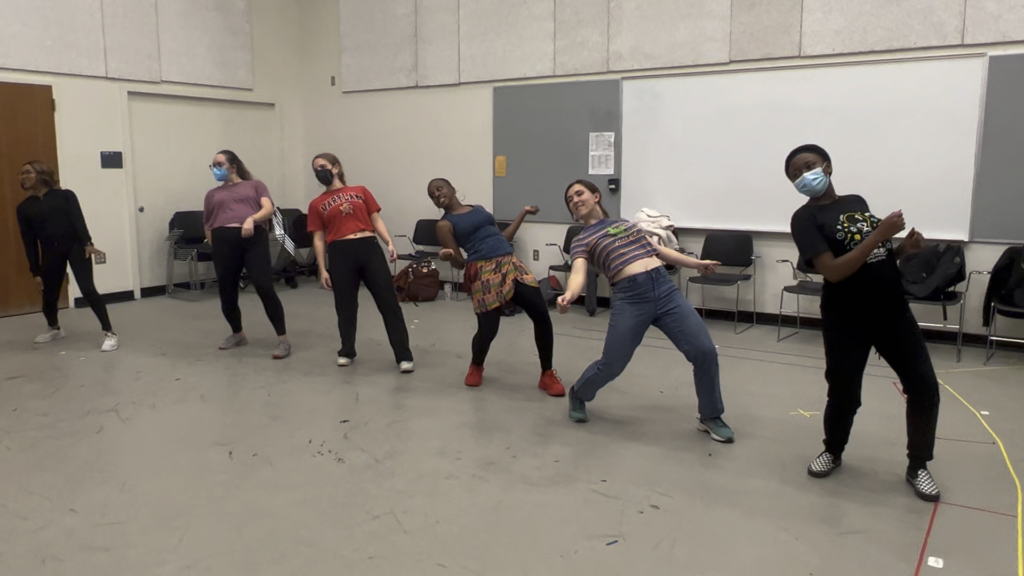
“My grandmother grew up in the same neighborhood as Fela and they played in the streets together,” Hamilton-Samuel explained to the class. “He was a giant in Nigerian music and Pan-African politics at large, and I feel like personal anecdotes like this humanize him.”
Students had different responses to each guest—each style brought about different emotional responses, such as feeling less stressed, gaining confidence or getting into a “flow.” They gained insights through readings and discussions into how movement practices can also reveal the politics that surround them. Students applied these insights to individual research projects focused on forms such as taekwondo, salsa and Israeli folk dance.
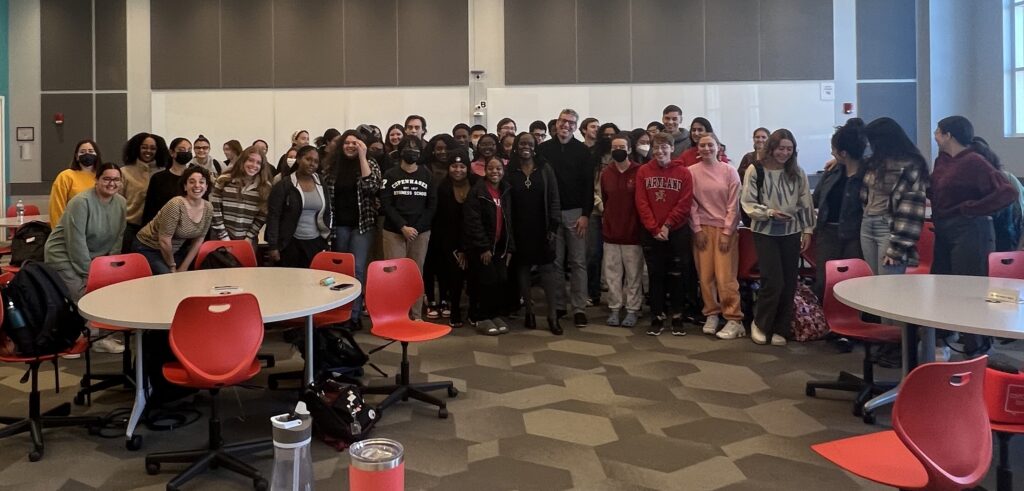
Nigerian culture was also at the center of discussion in Dr. Randy Ontiveros’ first-year seminar, “Introduction to the Arts and Humanities,” when the class was visited by Dr. Stephanie Shonekan, the new dean of UMD’s College of Arts and Humanities. Shonekan is an ethnomusicologist who has written about Fela Kuti and Afrobeat, and she spoke to the class about cultural hybridity in Nigerian hip hop.
Sophomore music major Ally Rizzo said, “I appreciated her willingness to address controversial topics. Not only did I learn to look at musical traditions from across the globe through a different lens, but I also developed a connection with Dean Shonekan through our shared love of music.”
While some Honors Humanities seminars were global in scope, others did a deep dive into a specific geographical region, such as Dr. Marilyn Matar’s course on “Borders, Exile, and War in the Middle East.” Students looked at creative responses to conflict in Egypt, Israel, Lebanon, Palestine and Syria through literature, film and media. The class connected with guest speaker Nasri Sayegh, a French-Lebanese writer, visual artist and DJ based in Beirut, who grew up in France after his family fled the war in Lebanon. His writings are collages that represent the pieces of his life as an exile that help him recreate his own story.
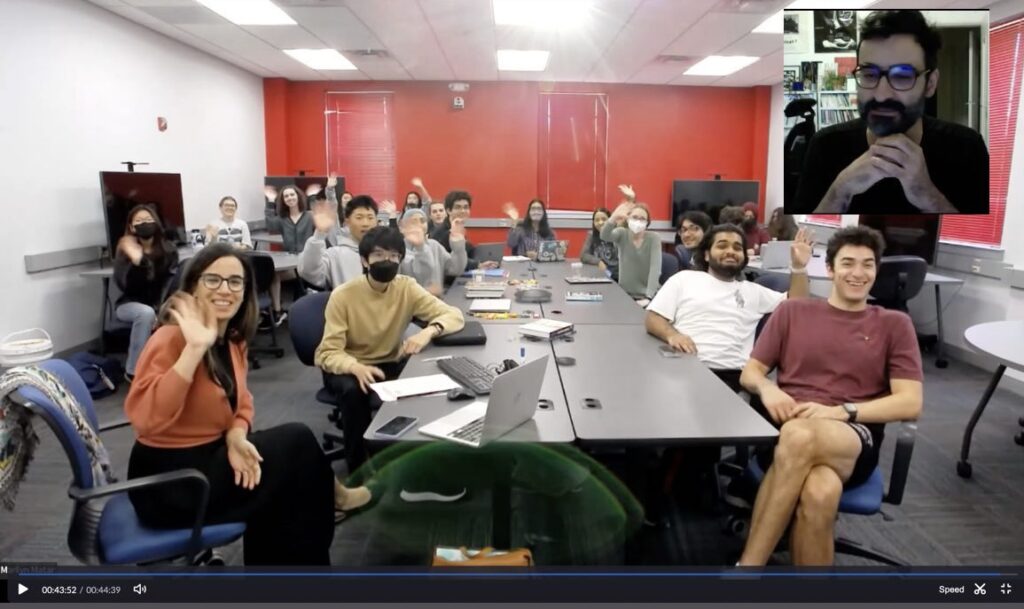
“My mother tongue is French ‘by mistake,’ as a result of tragedy,” said Sayegh. “My work is playful but it is also about re-building a shattered identity, both personally and for my country.”
His visit was complemented by Dr. Renée Ragin Randall, an assistant professor of comparative literature and Middle East studies at the University of Michigan. Randall led a class discussion about two chapters from Hoda Barakat’s “Disciples of Passion,” a book about the Lebanese civil war told from the quasi-hallucinatory perspective of a man undergoing psychiatric treatment. Questioning the narrator’s mental state and reliability required students to actively engage with the text and reflect on their assumptions about this period in history.
“Students had to rethink the politics of their reading,” said Randall. “They felt disoriented and I encouraged them to be frank about what they understood or did not understand.”
The small class size encouraged vulnerable discussions about difficult topics, and students appreciated the opportunity to look at this history from both creative and scholarly perspectives.
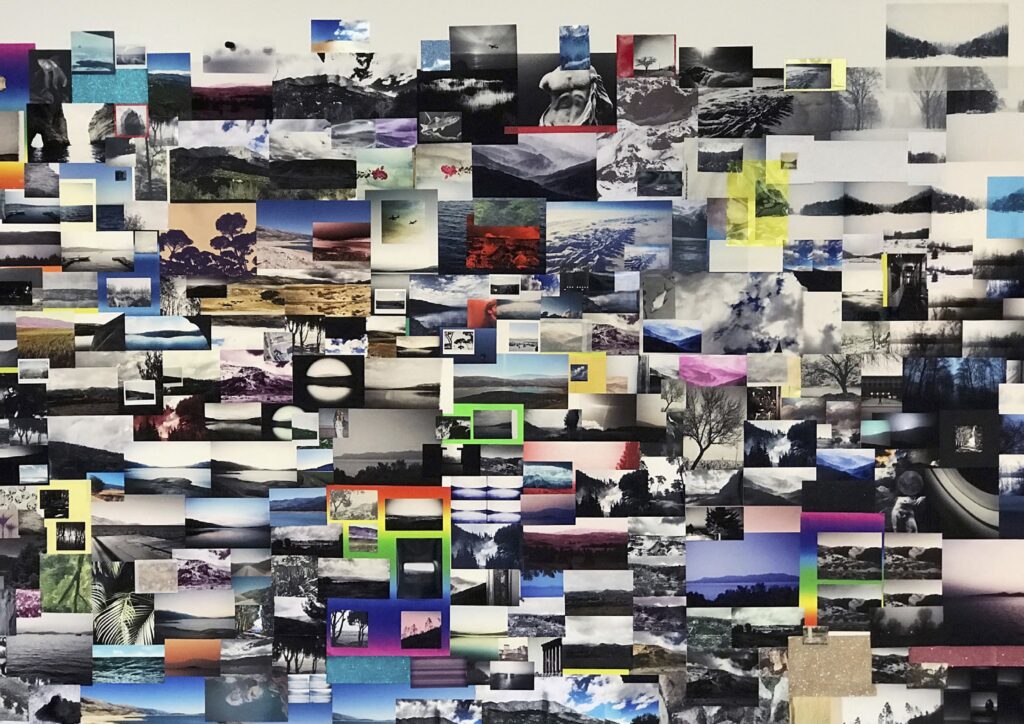
Adele Pasturel, a sophomore history major, reflected on the importance of archival work in both arts and scholarship: “I hadn’t realized that artists like Sayegh could do actual memory-keeping work that contributes to historical interpretation. It gave me a greater appreciation for what I can do as a historian.”
Overall, students in Honors Humanities seminars learn how they can creatively examine important global issues through research in the arts and humanities.
“Being a part of Honors Humanities has broadened my horizons about how the arts and humanities impact society,” said Rizzo. “The program has allowed me to explore my passions further and become well-rounded.”
To learn more about the Honors College’s Honors Humanities program, visit honorshumanities.umd.edu.
By Kate Spanos ’16 Ph.D. theatre, dance, and performance studies



